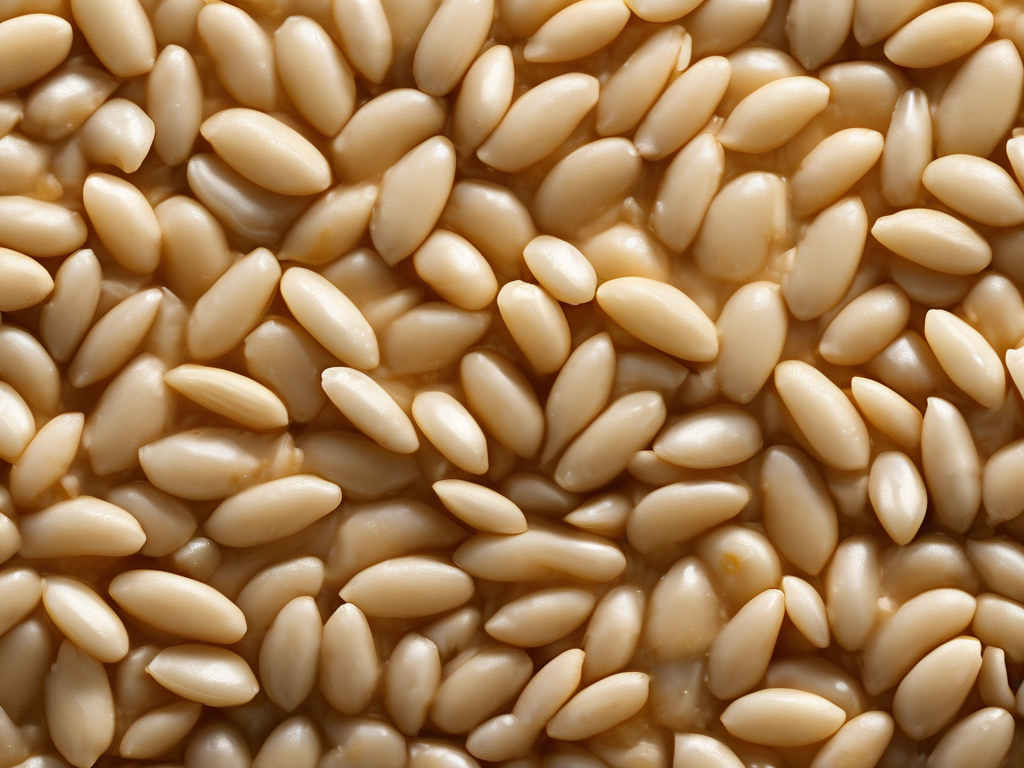
The Ultimate Guide to Storing Cooked Barley for Maximum Freshness
The Ultimate Guide to Storing Cooked Barley for Maximum Freshness
Cooked barley is a versatile and nutritious grain that can be used in a variety of dishes, from soups and salads to pilafs and breakfast bowls. Proper storage of cooked barley is essential to maintain its freshness, flavor, and quality. In this comprehensive guide, we will explore the best practices for storing cooked barley to ensure it stays fresh for as long as possible. (Cooked barley)
Why is Proper Storage Important for Cooked Barley?
Proper storage of cooked barley is crucial for several reasons:
- Maintaining Freshness: Storing cooked barley correctly helps retain its texture, flavor, and nutritional value.
- Preventing Spoilage: Improper storage can lead to the growth of harmful bacteria, which can cause foodborne illnesses.
- Minimizing Waste: By storing cooked barley properly, you can extend its shelf life and reduce food waste.
Tips for Storing Cooked Barley
Here are some practical tips for storing cooked barley to ensure it stays fresh and safe to eat:
- Cooling Down: Before storing cooked barley, allow it to cool to room temperature to prevent condensation buildup, which can lead to mold growth.
- Proper Containers: Store cooked barley in airtight containers to prevent moisture and air from reaching the grain.
- Refrigeration: Cooked barley should be refrigerated promptly, ideally within two hours of cooking, to slow down bacterial growth.
- Labeling and Dating: To keep track of freshness, label the containers with the date the barley was cooked and use the oldest barley first.
- Avoiding Cross-Contamination: Store cooked barley away from raw meat, poultry, and seafood to prevent cross-contamination.
Refrigerating Cooked Barley
Refrigeration is the best way to store cooked barley for short-term use. Here's how to refrigerate cooked barley properly:
- Cooling: Allow the cooked barley to cool to room temperature before transferring it to the refrigerator.
- Airtight Containers: Place the barley in airtight containers or resealable bags to prevent moisture loss and odor absorption.
- Shelf Life: Cooked barley can be stored in the refrigerator for up to 3-4 days.
- Reheating: Reheat cooked barley thoroughly before consuming to kill any bacteria that may have developed during storage.
Freezing Cooked Barley
Freezing cooked barley is an excellent option for long-term storage. Follow these steps to freeze cooked barley effectively:
- Cooling: Cool the cooked barley completely before freezing to prevent ice crystals from forming.
- Packaging: Divide the barley into portion-sized containers or freezer bags for easy thawing.
- Labeling: Label the containers with the date and portion size for easy identification.
- Shelf Life: Cooked barley can be frozen for up to 3 months without compromising quality.
Thawing and Reheating Cooked Barley
When ready to use frozen cooked barley, follow these steps to thaw and reheat it safely:
- Thawing: Transfer the frozen cooked barley to the refrigerator and allow it to thaw overnight.
- Reheating: Reheat the thawed barley in the microwave or on the stovetop until steaming hot (165°F) before serving.
Conclusion
Proper storage of cooked barley is essential for maintaining its freshness, flavor, and quality. By following the tips outlined in this guide, you can ensure that your cooked barley stays safe to eat and delicious for longer periods. Whether you choose to refrigerate or freeze your cooked barley, remember to cool it down properly, use airtight containers, and label and date the storage containers. Enjoy the versatility and nutritional benefits of cooked barley by storing it correctly! (Cooked barley)
Authoritative Food Safety References
These agencies and university labs inform every tip and health precaution we publish.
USDA FoodKeeper – Cold Storage Guidelines
Official refrigerator, freezer, and pantry timelines maintained by the U.S. Department of Agriculture.
Visit USDA FoodKeeperFDA Produce Safety Rule & Grower Guidance
Field-to-fridge handling practices that prevent contamination of fruits, vegetables, and leafy greens.
Visit FDA Produce SafetyCDC Foodborne Illness Prevention Hub
Surveillance-backed guidance on pathogens, symptoms, and steps to reduce foodborne illness risk.
Visit CDC Food SafetyUC Davis Postharvest Technology Center
University research detailing optimal storage atmospheres for produce after harvest.
Visit UC Davis PostharvestPenn State Extension – Home Food Preservation & Safety
Peer-reviewed extension bulletins on safe canning, chilling, and reheating practices.
Visit Penn State ExtensionScan your food directly and get instant safety info using our AI-powered camera feature.